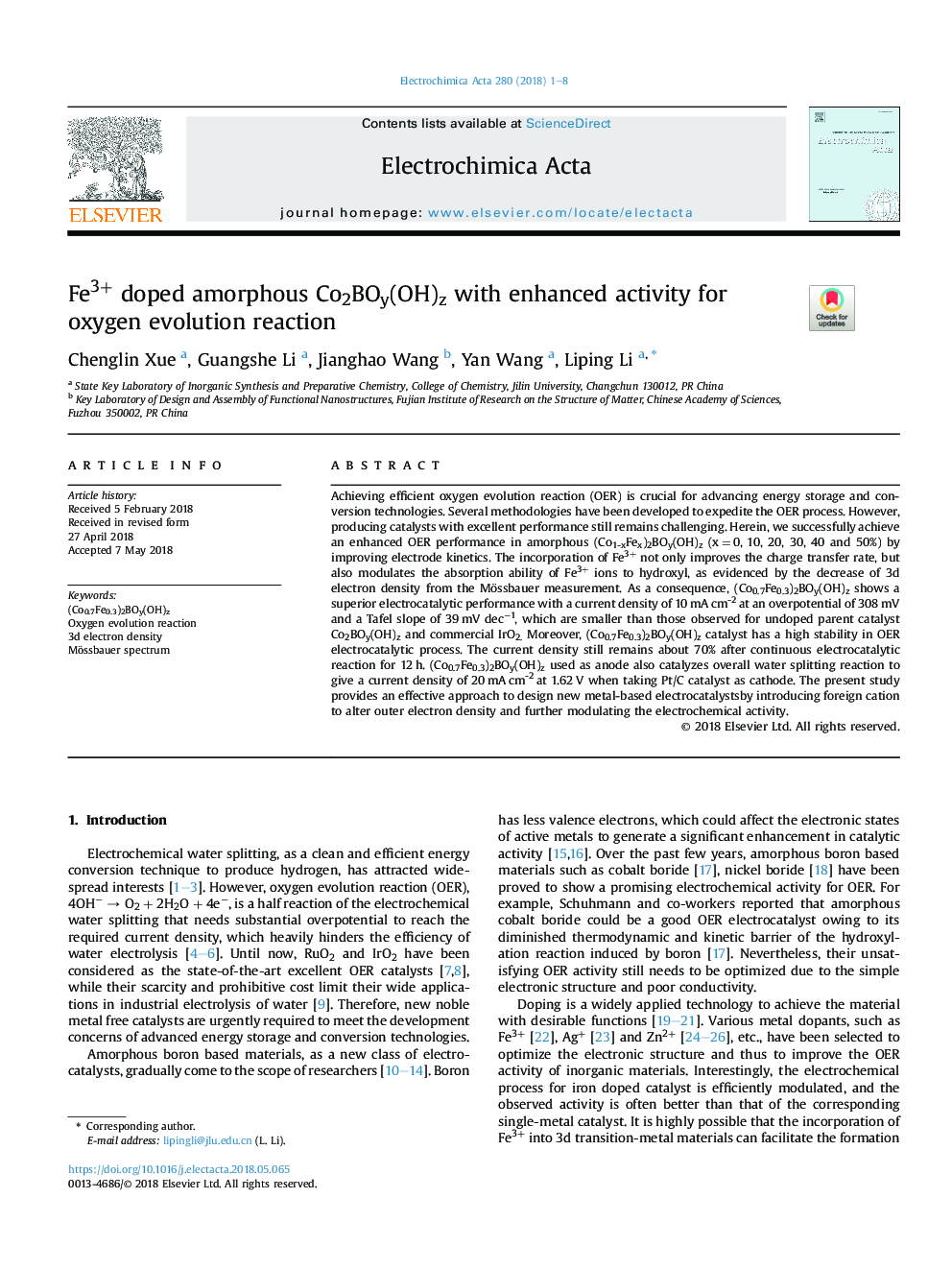| Article ID | Journal | Published Year | Pages | File Type |
|---|---|---|---|---|
| 6602498 | Electrochimica Acta | 2018 | 8 Pages |
Abstract
Achieving efficient oxygen evolution reaction (OER) is crucial for advancing energy storage and conversion technologies. Several methodologies have been developed to expedite the OER process. However, producing catalysts with excellent performance still remains challenging. Herein, we successfully achieve an enhanced OER performance in amorphous (Co1-xFex)2BOy(OH)z (xâ¯=â¯0, 10, 20, 30, 40 and 50%) by improving electrode kinetics. The incorporation of Fe3+ not only improves the charge transfer rate, but also modulates the absorption ability of Fe3+ ions to hydroxyl, as evidenced by the decrease of 3d electron density from the Mössbauer measurement. As a consequence, (Co0.7Fe0.3)2BOy(OH)z shows a superior electrocatalytic performance with a current density of 10â¯mAâ¯cm-2â¯at an overpotential of 308â¯mV and a Tafel slope of 39â¯mV decâ1, which are smaller than those observed for undoped parent catalyst Co2BOy(OH)z and commercial IrO2. Moreover, (Co0.7Fe0.3)2BOy(OH)z catalyst has a high stability in OER electrocatalytic process. The current density still remains about 70% after continuous electrocatalytic reaction for 12â¯h. (Co0.7Fe0.3)2BOy(OH)z used as anode also catalyzes overall water splitting reaction to give a current density of 20â¯mAâ¯cm-2â¯at 1.62â¯V when taking Pt/C catalyst as cathode. The present study provides an effective approach to design new metal-based electrocatalystsby introducing foreign cation to alter outer electron density and further modulating the electrochemical activity.
Related Topics
Physical Sciences and Engineering
Chemical Engineering
Chemical Engineering (General)
Authors
Chenglin Xue, Guangshe Li, Jianghao Wang, Yan Wang, Liping Li,
